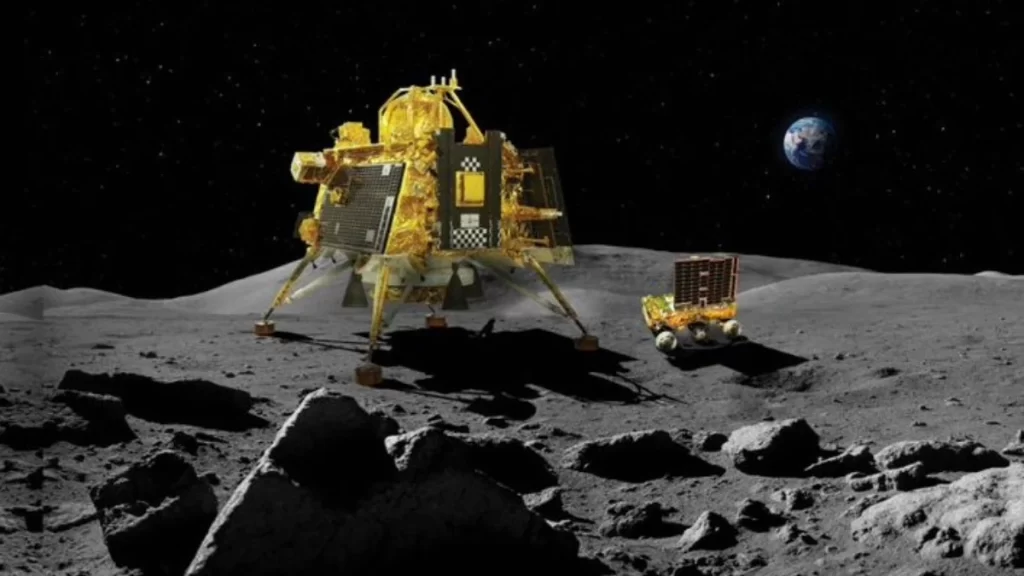
The Pragyan lunar rover, which is a part of India’s Chandrayaan-3 mission, has detected Sulphur near the Moon’s south pole, the Indian Space Research Organisation (ISRO) has said in a statement.
“Laser-Induced Breakdown Spectroscope (LIBS) instrument onboard the Rover unambiguously confirms the presence of Sulphur in the lunar surface near the south pole, through first-ever in-situ measurements,” the ISRO posted on X (formerly Twitter).
The space agency confirmed that aluminum, calcium, iron, chromium, titanium, manganese, silicon, and oxygen have also been detected, as expected, and that the “search for hydrogen is underway,” RT reports.
In a separate post, ISRO showed the pictures of Vikram lander clicked by the navigation camera onboard the rover on Wednesday morning.
Of the three missions envisaged by the scientists behind the Chandrayaan-3 mission – a demonstration of a soft landing, a rover roving on the Moon, and conducting in-situ scientific experiments – the probe has already accomplished two, and the third is underway, ISRO said earlier.
The Chandyaan-3 mission is analyzing the composition of materials on the Moon by exposing them to high-energy laser pulses, the ISRO has said. The technique, known as ‘LIBS’, can determine the elemental composition of materials such as rocks and soil.
On August 27, the rover came across a 4-meter-diameter crater located 3 meters in front of it. However, a course correction was done and the rover safely headed on a new path, the space agency stated.
Chandrayaan-3 Mission:On August 27, 2023, the Rover came across a 4-meter diameter crater positioned 3 meters ahead of its location. The Rover was commanded to retrace the path. It’s now safely heading on a new path.#Chandrayaan_3#Ch3pic.twitter.com/QfOmqDYvSF
The Chandrayaan-3 landing on August 23 is considered a landmark achievement, making India the first country to land near the south pole of the Moon, and the fourth after the Soviet Union, the United States, and China to successfully land a spacecraft on the Moon. According to the US space agency NASA’s database on Moon missions, only 62 such missions (out of 111 total) were successful in the last seven decades.
“In this period of the 21st century, the country which takes the lead in science and technology will move ahead,” Indian Prime Minister Narendra Modi said while visiting the Bengaluru command centre of ISRO on August 26. On August 29, in a separate resolution on celebrating the “historic success” of the Chandrayaan-3 mission, India’s Union Cabinet hailed the descent as “a bright symbol of India’s progress and ascent on the global stage”. It also supported celebrating August 23 as National Space Day.






